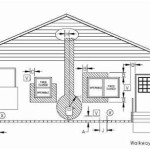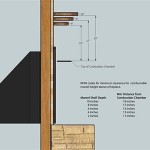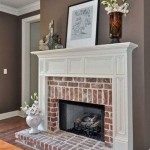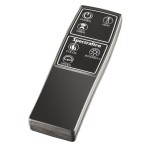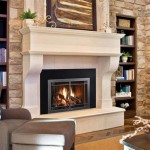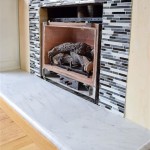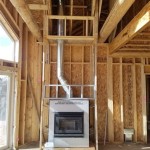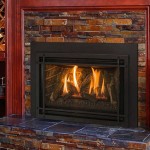Fireplace Wood Burning Stove: A Comprehensive Guide
Fireplace wood burning stoves represent a time-honored method of providing supplemental or primary heat in residential and commercial settings. Their functionality extends beyond mere warmth; they offer a visual focal point, a sense of ambiance, and a degree of energy independence, particularly in regions where wood is readily available. Understanding the various aspects of wood burning stoves, from their mechanics to their maintenance, is crucial for safe and efficient operation.
A wood burning stove is essentially a contained fire chamber designed to burn wood fuel for heat. Unlike open fireplaces, stoves are typically constructed of cast iron or steel and feature airtight doors that regulate airflow. This controlled combustion process results in higher efficiency ratings and reduced emissions compared to traditional fireplaces. The heat generated radiates directly from the stove's surface, warming the surrounding space, while some models incorporate convection systems to circulate warm air more effectively.
The efficiency of a wood burning stove is determined by several factors, including the design of the firebox, the quality of the materials used, and the ability to control airflow. Modern stoves are often equipped with features like catalytic converters or secondary combustion chambers, which further reduce emissions and extract more heat from the wood fuel. The proper installation of a stove, including the chimney and flue system, is also paramount for safe and efficient operation. A poorly installed stove can pose a significant fire hazard and contribute to indoor air pollution.
The selection of the appropriate wood burning stove depends on several considerations, including the size of the space to be heated, the desired heat output, and the aesthetic preferences of the homeowner. Stoves are typically rated in terms of their BTU (British Thermal Unit) output, which indicates the amount of heat they can produce per hour. It is essential to choose a stove that is appropriately sized for the space; an oversized stove can lead to overheating and discomfort, while an undersized stove may not provide sufficient warmth.
Understanding Stove Components and Functionality
A typical wood burning stove consists of several key components, each contributing to its overall performance. The firebox is the central chamber where the wood is burned. It is usually lined with firebrick, a refractory material that insulates the stove and reflects heat back into the fire. The door of the stove is designed to create an airtight seal, regulating the amount of air entering the firebox. Air controls, often in the form of dampers or levers, allow the user to adjust the airflow and control the combustion rate.
The chimney is a critical component of the wood burning stove system, responsible for venting combustion gases safely out of the building. The chimney must be properly sized and constructed to ensure adequate draft, which is the force that draws air into the stove and pulls smoke and gases up the chimney. A poorly designed or maintained chimney can lead to backdrafting, where smoke and gases are drawn back into the living space. Regular inspection and cleaning of the chimney are essential for preventing creosote buildup, a highly flammable substance that can lead to chimney fires.
Many modern stoves incorporate advanced features such as catalytic converters or secondary combustion chambers. Catalytic converters are devices that reduce emissions by oxidizing unburned gases and particulate matter at lower temperatures. Secondary combustion chambers burn off gases that would otherwise be released into the atmosphere, further reducing emissions and increasing efficiency. These features can significantly improve the environmental performance of a wood burning stove.
Baffles are also important components. These are typically metal plates placed within the firebox that force hot gases to travel a longer path before exiting through the flue. This increases the retention time of the gases within the firebox, allowing for more complete combustion and greater heat extraction. Baffles contribute to higher efficiency and lower emissions.
Fuel Selection And Preparation
The type of wood burned in a stove significantly affects its performance and the amount of heat produced. Hardwoods, such as oak, maple, and ash, are denser than softwoods and therefore contain more energy per unit volume. They burn longer and produce more heat than softwoods like pine or fir. However, softwoods ignite more easily, making them useful for starting fires.
The moisture content of the wood is also critical. Green wood, which has a high moisture content, burns poorly and produces excessive smoke. It takes energy to evaporate the moisture in the wood before it can burn effectively, reducing the heat output and increasing the risk of creosote buildup. Seasoned wood, which has been allowed to dry for at least six months, has a lower moisture content and burns more cleanly and efficiently.
Proper wood storage is essential for maintaining its dryness. Wood should be stacked in a well-ventilated area, protected from rain and snow. Covering the top of the wood pile is recommended, allowing air to circulate freely around the sides. Stacking wood off the ground on pallets or timbers can also help to prevent moisture from wicking up from the ground.
The size of the wood pieces is also an important consideration. Smaller pieces ignite more easily and burn more quickly, while larger pieces burn longer and produce a more sustained heat output. The optimal size of the wood pieces depends on the size of the firebox and the desired burn characteristics. Generally, wood pieces should be split to a size that allows for adequate airflow around them within the firebox.
Operation, Maintenance, and Safety Considerations
Operating a wood burning stove safely and efficiently requires careful attention to detail. Before starting a fire, ensure that the chimney is clear of obstructions and that the stove is in good working order. Open the damper fully to allow for maximum airflow. Place kindling and small pieces of wood in the firebox and ignite them. Once the fire is established, gradually add larger pieces of wood.
Avoid overloading the stove with wood, as this can lead to overheating and potentially damage the stove or chimney. Monitor the fire regularly and adjust the air controls to maintain a steady and controlled burn. Never leave a burning stove unattended, especially when children or pets are present.
Regular maintenance is essential for ensuring the safe and efficient operation of a wood burning stove. The chimney should be inspected and cleaned at least once a year, or more frequently if heavy use is anticipated. Creosote buildup should be removed to prevent chimney fires. The stove should also be inspected for any signs of damage or wear, such as cracks in the firebox or damaged door seals.
Door gaskets are a critical component that maintains the airtight seal of the stove. These gaskets should be inspected regularly and replaced if they become worn or damaged. A leaking door gasket can reduce the efficiency of the stove and increase the risk of carbon monoxide poisoning.
Carbon monoxide detectors should be installed in any home that uses a wood burning stove. Carbon monoxide is a colorless, odorless gas that can be produced by incomplete combustion. Exposure to carbon monoxide can be fatal. Test the carbon monoxide detectors regularly to ensure that they are functioning properly.
Ash removal is another important aspect of stove maintenance. Ash should be removed regularly to prevent it from building up and interfering with airflow. Allow the ash to cool completely before removing it, and dispose of it in a metal container with a tight-fitting lid. Do not store ash indoors, as it can contain embers that can reignite.
Finally, it is crucial to be aware of local regulations regarding wood burning stoves. Many municipalities have restrictions on the types of stoves that can be installed and the types of wood that can be burned. Some areas may also have restrictions on the times of day when wood burning stoves can be used, particularly during periods of air pollution.

Freestanding Wood Burning Stoves Sierra Hearth And Home

Wood Burning Stoves Sussex Fireplace Gallery

Wood Burning Stoves In Milton Keynes Inspirations

Wood Burning S Hearthstone Stoves Vermont

How To Heat Your House With Just A Wood Burning Stove Chesneys

Wood Burning Stoves Sussex Fireplace Gallery

Stoves Wood Gas Pellet Lopi

Is It Time To Replace Your Wood Burning Stove Direct Stoves

Wood Burning Stove We Love Fire

How To Buy A Wood Stove Buyer S Guide From Regency
Related Posts

